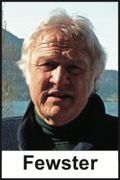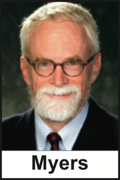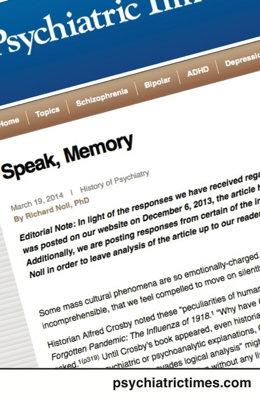Rascals case in brief
In the beginning, in 1989, more than 90 children at the Little Rascals Day Care Center in Edenton, North Carolina, accused a total of 20 adults with 429 instances of sexual abuse over a three-year period. It may have all begun with one parent’s complaint about punishment given her child.
Among the alleged perpetrators: the sheriff and mayor. But prosecutors would charge only Robin Byrum, Darlene Harris, Elizabeth “Betsy” Kelly, Robert “Bob” Kelly, Willard Scott Privott, Shelley Stone and Dawn Wilson – the Edenton 7.
Along with sodomy and beatings, allegations included a baby killed with a handgun, a child being hung upside down from a tree and being set on fire and countless other fantastic incidents involving spaceships, hot air balloons, pirate ships and trained sharks.
By the time prosecutors dropped the last charges in 1997, Little Rascals had become North Carolina’s longest and most costly criminal trial. Prosecutors kept defendants jailed in hopes at least one would turn against their supposed co-conspirators. Remarkably, none did. Another shameful record: Five defendants had to wait longer to face their accusers in court than anyone else in North Carolina history.
Between 1991 and 1997, Ofra Bikel produced three extraordinary episodes on the Little Rascals case for the PBS series “Frontline.” Although “Innocence Lost” did not deter prosecutors, it exposed their tactics and fostered nationwide skepticism and dismay.
With each passing year, the absurdity of the Little Rascals charges has become more obvious. But no admission of error has ever come from prosecutors, police, interviewers or parents. This site is devoted to the issues raised by this case.
On Facebook
Click for earlier Facebook posts archived on this site
Click to go to
Today’s random selection from the Little Rascals Day Care archives….
Click for earlier Facebook posts archived on this site
Click to go to
Today’s random selection from the Little Rascals Day Care archives….
How one journal editor went very, very wrong
 Dec. 7, 2012
Dec. 7, 2012
Following up on Wednesday’s post:
Here’s how editor Gerry Fewster began his introduction to “In the Shadow of Satan: The Ritual Abuse of Children,” the still-unretracted 1990 special issue of the Journal of Child and Youth Care:
“Putting this issue together has been my most difficult Journal assignment…. It began as a fascinating prospect with little or no supportive documentation. As I discussed the concept with colleagues and friends the most unlikely doors began to open. Fragments of information – odd papers, crude and unfinished manuscripts, unsolicited telephone calls, personal revelations, and even photographs – began to appear….”
Dr. Fewster’s professional skepticism seems to have quickly yielded to those phantasmagoric “fragments of information.” He details an investigative process that….well, evaluate for yourself:
“Many times during the course of reading the material, I decided to quit. I found that I had neither the head nor the stomach for the task…. After spending many hours reading from the protective armor of the editorial role, I would feel physically ill. At first I attributed all of this to my reluctance to examine the depths of my own ‘shadow’ and urged myself on. Then, as my curiosity rekindled, I would shrink back in horror from the spectres of my own hidden motives and intentions….”
Dr. Fewster goes on to introduce his fellow contributors to “In the Shadow of Satan.”
Pamela S. Hudson, for instance, “provides an authoritative wide-angle perspective. Based upon clinical experience and the results of her own survey, the author identifies and discusses the most frequently reported symptoms and allegations surrounding ritual child abuse. Beyond the grisly nature of the content, this seasoned practitioner offers a wealth of insight for those who wish to know about satanic practices and better understand the terrifying experiences of children caught up in this vicious network.”
Hudson’s article isn’t available online, but fortunately is preserved in her subsequent book “Ritual Child Abuse: Discovery, Diagnosis and Treatment.” Here’s an example of the “wealth of insight” provided by “this seasoned practitioner”:
“The exceptional symptom in ritual abuse cases is the sudden eating disorder
demonstrated by these children. Besides being revolted by meat, catsup, spaghetti and tomatoes (which resemble organs), (cf., Catherine Gould) I had a case of a 20-month-old girl suddenly start to throw away her baby bottle. When she was older she said the perpetrator urinated into her baby bottle during his visits with her. Later, she spoke of witnessing the death of a baby girl….”
All this impressionistic pseudoscience could be written off as overreaching silliness, had it not contributed to the moral panic that swept up innocent victims such as the Edenton Seven. Isn’t it time for the editors at those professional journals that enabled the reign of error to at last set the record straight?
Board couldn’t see Betsy Kelly ‘minus her publicity’
Sept. 13, 2013
“I am urging you to treat Elizabeth Kelly as you would treat anyone else with the same case file. I am asking you to demonstrate that we are all ‘equal under the law.’ Any other inmate with the same sentence and clean record would have been eligible for parole the minute she walked through the gates of the prison…. I am appealing to you not to withhold that which she would otherwise likely receive — minus her publicity, minus the rhetoric of politicians. I am imploring you not to deal more strictly with her than with others simply because she is Elizabeth Kelly.”
– From a letter to the North Carolina Parole Commission by Jane W. Duffield of Raleigh (April 5, 1994)
The Parole Commission proved unable or unwilling to consider Betsy Kelly’s case “minus her publicity, minus the rhetoric of politicians.” Bill Hart, vengeful over her unwavering insistence that she was innocent, reneged on a plea agreement not to contest her release, and the Parole Commission obediently sent her back for seven more months of wrongful imprisonment.
Professor yet to decide about McMartin case
 June 28, 2013
June 28, 2013
“Children can lie, but research shows that they do not fabricate detailed descriptions of adult sexual acts unless they have experienced or witnessed them. Studies also show that children have good memories and that even preschoolers can remember key events like sexual abuse. One problem is that repeatedly molested children have great difficulty distinguishing one act of abuse from another and linking abuse to specific dates….
“In the McMartin case, we learned… to minimize the use of leading questions during interviews…. While the verdict comes as a disappointment to the children in the case, their courage and willingness to testify for weeks on end has been a catalyst for change that will protect countless other children.”
– From Believe the Children adviser Civia Tamarkin’s interview with John E. B. Myers, professor at McGeorge School of Law, University of the Pacific, in “The McMartin Nightmare” (People magazine, Feb. 5, 1990)
As his faculty bio notes, Professor Myers has long been “one of the country’s foremost authorities on child abuse,” especially in tracing its historical context, but he seems to have been excruciatingly slow to recognize the fraudulence of “satanic ritual abuse” claims. Although he stopped short of declaring the McMartins guilty, Myers clearly stationed himself in the “child saver” camp, more sympathetic toward serial interviewer Kee MacFarlane than toward the defendants whose lives she devastated.
In a journal article five years later, Myers would acknowledge “growing skepticism regarding children’s credibility,” at the same time warning of a “real danger that the pendulum will swing too far in the direction of disbelief.”
More recently, Myers addressed McMartin in “Child Protection in America: Past, Present, and Future” (2006), crediting it with raising the standard for interviewing, but concluding that “In the final analysis, we will never know what happened at the McMartin Preschool. From the outset, the case divided people into ‘true believers’ and skeptics….”
In “The Backlash: Child Protection Under Fire” (1994) Myers had added a most curious footnote: “I have no opinion regarding the guilt or innocence of any of the McMartin defendants.” How could he – a law professor! – acknowledge the corruption of the child-witnesses’ testimony, yet doubt the defendants deserved a “not guilty” verdict?
Almost 20 years later, I wondered whether Myers might have formed an opinion.
His emailed response: “No idea about guilt or innocence.”
SRA apologists flushed from their diploma-papered caves
 March 22, 2014
March 22, 2014
“Editorial Note: In light of the responses we have received regarding this article by Richard Noll, PhD, that was posted on our website on December 6, 2013, the article has been reposted with a modification. Additionally, we are posting responses from certain of the individuals mentioned in the article and from Dr. Noll in order to leave analysis of the article up to our readers.”
– From “Speak, Memory,” Psychiatric Times’ reposted version of Noll’s “When Psychiatry Battled the Devil.”
As pointed out at 1 boring old man, PT’s belated reposting omits this passage:
“New (American Psychiatric Association) work groups for the preparation of DSM-IV were formed. Not surprisingly, none of the former members of the DSM-III-R Advisory Committee on Dissociate Disorders was invited to be on the work group for the dissociative disorders.”
Prominent among those uninvitees, of course, were Dr. Richard Kluft and Dr. Bennett Braun, both of whom broke their silence to accept PT’s offer of space to swat back at Noll. Also responding: Dr. David Spiegel, recently described as “the most influential man responsible” for the inclusion of DID/MPD in DSM-V.
And now Noll has gently rebutted – for the most part, refuted – the SRA apologists’ noisy rebuttals.
It’s been 25 years since the fever-breaking Chicago conference – plus another three months while Psychiatric Times searched its soul and its appetite for litigation. Does the vigorous exchange on the PT site mark the beginning of psychiatry’s overdue reexamination of its SRA era?
If so, that discussion must address not only the causes of the moral panic but also its effects: that is, the wrongful and brutal prosecution of hundreds of innocent defendants such as the Edenton Seven – a subject Kluft, Braun and Spiegel managed to mention not at all in their responses. Are they really so oblivious?











0 CommentsComment on Facebook